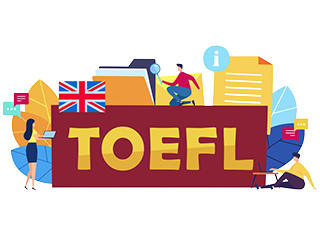Exam
Language Exam
GES brings Australia Technology to the Myanmar market to make it easier for teachers and students. They can assess anywhere, anytime to learn General English or Exam Preparation which are necessary for future career and university admissions.
Such progress is seldom abrupt, but rather a steady, progressive, and intricate process that occurs over a relatively lengthy period of time
To help the client improve their LEARNING SKILLS and ease them with the best service.
Make it easier with readymade courses and check students’ progress from the teacher account.



General English
- A universal language and is spoken in many countries in the world.
- Learning English can help you meet new people.
- Studying English can help you get a job.
- Travelling is a lot easier with a good knowledge of English.
- With English, you can study all over the world.
If you are interested in taking any below General English or English exam, you can call / write to us.
Once you paid fees, you can login here Login
Level of GE Courses
| Beginner (A1) | 60 hr |
| Pre-Intermediate (A2) | 82 hr |
| Intermediate (B1) | 70 hr |
| Upper-Intermediate (B2) | 47 hr |
| Advanced (C1) | 63 hr |
| Essential Grammar | 98 hr |
| Essential Pronunciation | 88 hr |
| Advanced Pronunciation | 27 hr |
IELTS
By taking an IELTS test, you will receive a test report that is recognized and accepted by thousands of institutions around the world, including companies, universities, professional bodies, and government agencies. You will improve your English language skills.
There are General IELTS & Academic IELTS. You can choose an online exam (or) paper exam.

All IELTS scores are between 0 and 9. You can also get .5 scores as well (for example, 6.5 or 7.5). You will get a band score for each skill (listening, reading, writing and speaking) and also an overall band score. The overall band score is the average score of all the skills.
Test format – Listening (30 minutes)
You will listen to four recordings of native English speakers and then write your answers to a series of questions.
- Recording 1 – a conversation between two people set in an everyday social context.
- Recording 2 – a monologue set in an everyday social context, e.g. a speech about local facilities.
- Recording 3 – a conversation between up to four people set in an educational or training context, e.g. a university tutor and a student discussing an assignment.
- Recording 4 – a monologue on an academic subject, e.g. a university lecture.
Test format – Reading (60 minutes)
- The Reading section consists of 40 questions, designed to test a wide range of reading skills. These include reading for gist, reading for main ideas, reading for detail, skimming, understanding logical argument and recognising writers’ opinions, attitudes and purpose.
Test format – Academic Writing (60 minutes)
Topics are of general interest to, and suitable for, test takers entering undergraduate and postgraduate studies or seeking professional registration. There are two tasks:
- Task 1 – you will be presented with a graph, table, chart or diagram and asked to describe, summarise or explain the information in your own words. You may be asked to describe and explain data, describe the stages of a process, how something works or describe an object or event.
- Task 2- you will be asked to write an essay in response to a point of view, argument or problem. Responses to both tasks must be in a formal style.
Test format – Speaking (11–14 minutes)
The speaking section assesses your use of spoken English. Every test is recorded.
- Part 1 – the examiner will ask you general questions about yourself and a range of familiar topics, such as home, family, work, studies and interests. This part lasts between four and five minutes.
- Part 2 – you will be given a card which asks you to talk about a particular topic. You will have one minute to prepare before speaking for up to two minutes. The examiner will then ask one or two questions on the same topic.
- Part 3 – you will be asked further questions about the topic in Part 2. These will give you the opportunity to discuss more abstract ideas and issues. This part of the test lasts between four and five minutes.

TOEFL
Universities that require a TOEFL score usually ask you to meet a specific iBT (the internet-based test) score. The overall TOEFL score range is 0 to 120, and the score range for each individual exam section is 0 to 30.
| Section | Time Limit | Questions | Tasks |
|---|---|---|---|
| Reading | 54-72 Minutes | 30-40 Questions | Read passages and respond to questions |
| Listening | 41-57 Minutes | 28-39 Questions | Answer questions about brief lectures or classroom discussions |
| Speaking | 17 Minutes | 4 Tasks | Talk about a familiar topic & discuss material you read and listened to |
| Writing | 50 Minutes | 2 Tasks | Read a passage, listen to a recording, type your response |
It is the preferred test for entry requirements of US / Canada / Australia / NZ / EU universities, and the most widely accepted English proficiency test for higher education and job requirements.
PTE
The Pearson Test of English (PTE) is a computer-based test which assesses the English language skills of non-native speakers intending to apply for university courses in English-speaking countries.
PTE Academic is accepted by 3,000+ institutions worldwide, including Oxford University, Harvard Business School, and Yale. It is also accepted by the Australian, UK, and New Zealand governments for visa purposes.

Part 1: Speaking & Writing
This part of the test is 54–67 minutes long and it contains seven different question types. It is the longest section of the test. You will be tested on your speaking and writing skills, using English you might hear in an academic environment.
Part 2: Reading
This part of the test is 29–30 minutes long and it contains five different question types. Because PTE Academic is an integrated skills test, one item type (‘Reading and Writing: Fill in the blanks’) also assesses writing skills.
Part 3: Listening
This part of the test is 30–43 minutes long and it contains eight different question types.
The questions are based on audio or video clips, which begin to play automatically. You hear each audio or video clip once. You are allowed to take notes.

OET
The Occupational English Test (also known as OET) is an English language test for healthcare professionals recognised by various regulatory healthcare bodies. It assesses the language communication skills of healthcare professionals who wish to register and practise in an English-speaking environment.
Which country accept OET exam?
OET is recognized as proof of English Language proficiency by health regulators across Australia, Canada, Ireland, Maldives, Malta, Namibia, New Zealand, Philippines, Qatar, Singapore, Spain, Ukraine, United Kingdom, United Arab Emirates and the United States of America.
OET Test Format
There are 4 skills-based papers: Listening, Reading, Writing, Speaking.
The Listening and Reading papers are designed to assess a candidate’s ability to understand spoken and written English, based on health-related topics and tasks common to all professions. Texts range from short workplace notices and dialogues to longer articles and talks.
The Writing and Speaking papers are specific to the 12 individual healthcare professions. They are designed to reflect common tasks performed in the workplace. The writing asks candidates to write a referral letter, for example, while the Speaking asks candidates to role play a conversation in a clinical setting.
OET scores
Most healthcare regulators who recognise OET, require candidates to score C+ or B in the 4 papers to achieve the standard of English deemed sufficient to provide safe and effective care.
In the UK, for example, the General Medical Council (GMC) requires doctors to score B in all 4 papers in 1 sitting, whereas the Nursing and Midwifery Council (NMC) requires nurses to score a B in Reading, Listening and Speaking and a C+ in Writing. The NMC also allows nurses to ‘club’ different tests taken over a 5-month period together to achieve the grades, as long as no paper was graded under C+.
OET Recognition
The OET is recognised by regulatory healthcare bodies and councils, as well as university and Higher Education institutions, in the US, UK, Canada, Ireland, Australia, New Zealand, Singapore, Malta, the Maldives, Philippines, Qatar, UAE, Spain, Ukraine and Namibia.
